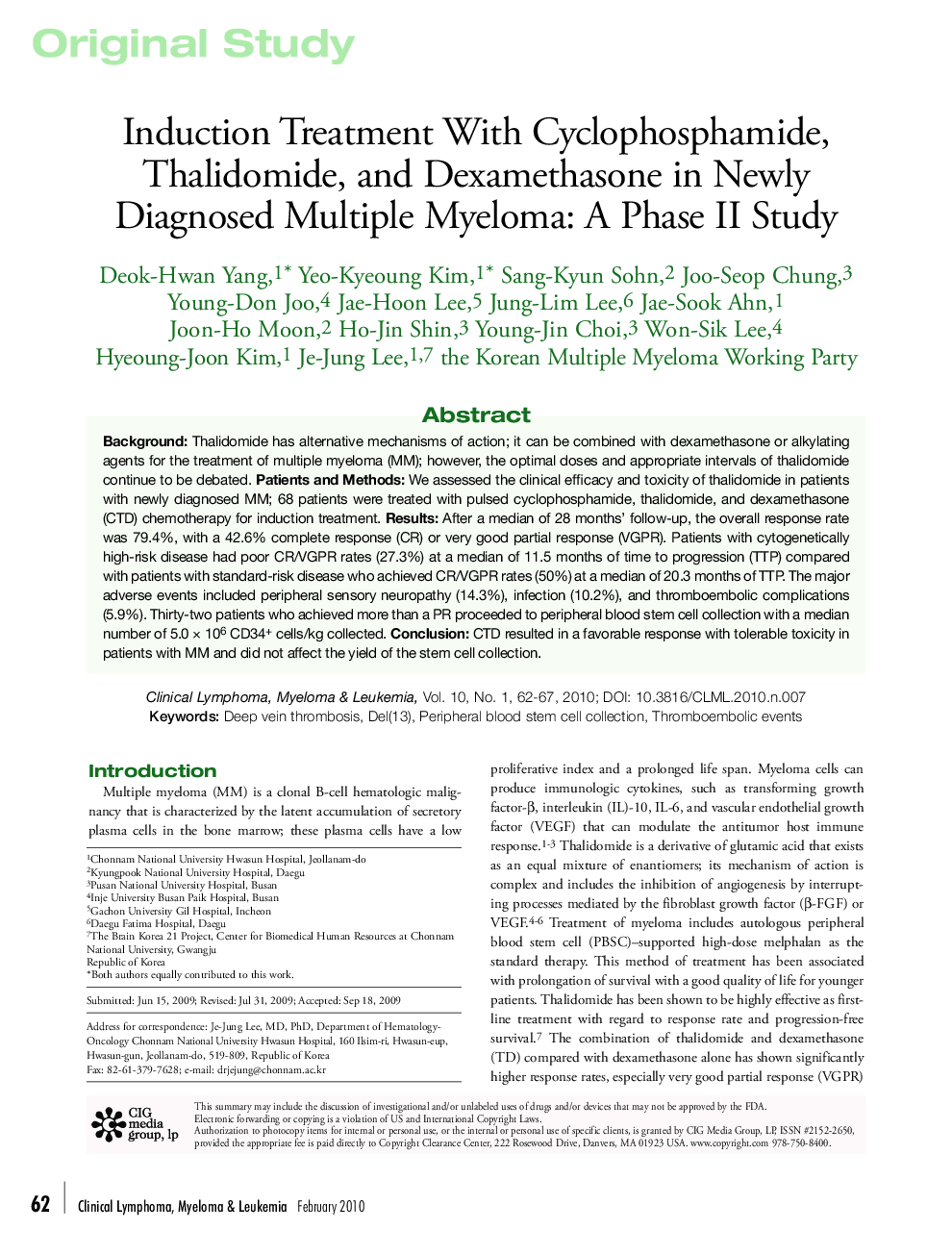| Article ID | Journal | Published Year | Pages | File Type |
|---|---|---|---|---|
| 2755470 | Clinical Lymphoma Myeloma and Leukemia | 2010 | 6 Pages |
Background:Thalidomide has alternative mechanisms of action; it can be combined with dexamethasone or alkylating agents for the treatment of multiple myeloma (MM); however, the optimal doses and appropriate intervals of thalidomide continue to be debated.Patients and Methods:We assessed the clinical efficacy and toxicity of thalidomide in patients with newly diagnosed MM; 68 patients were treated with pulsed cyclophosphamide, thalidomide, and dexamethasone (CTD) chemotherapy for induction treatment.Results:After a median of 28 months' follow-up, the overall response rate was 79.4%, with a 42.6% complete response (CR) or very good partial response (VGPR). Patients with cytogenetically high-risk disease had poor CR/VGPR rates (27.3%) at a median of 11.5 months of time to progression (TTP) compared with patients with standard-risk disease who achieved CR/VGPR rates (50%) at a median of 20.3 months of TTP. The major adverse events included peripheral sensory neuropathy (14.3%), infection (10.2%), and thromboembolic complications (5.9%). Thirty-two patients who achieved more than a PR proceeded to peripheral blood stem cell collection with a median number of 5.0 × 106 CD34+ cells/kg collected.Conclusion:CTD resulted in a favorable response with tolerable toxicity in patients with MM and did not affect the yield of the stem cell collection.
